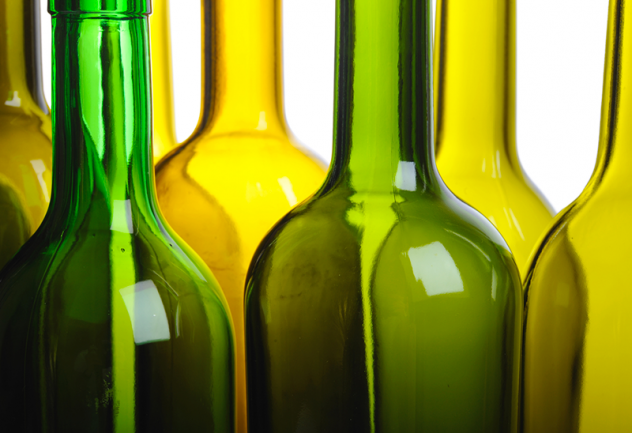
Cleaning and Sanitizing……
“They can make the difference between sound wine and spoiled wine.”
This article pertains mostly to those who make wine at home and also to Wine-making stores.
For those of you who come and bottle your wine at a Wine making store, it is very important that your bottles get rinsed as soon as you have enjoyed a bottle of wine. All you need to do is rinse your bottle with warm water and make sure you don’t leave any water behind. For screw top bottles, leave the cap off. This will prevent any water left in the bottle from eventually turn to mold.
Prior to bottling your wine, use a water rinse and a food grade sanitizer rinse. Sanitizer protects your wine and bottle from bacteria and oxidizing. However, as this article suggests, if your bottles are not clean prior to bottling it will spoil your wine despite our rinsing and sanitizing and we will in any case refuse any bottles that don’t look clean for the sake of your wine.
Daniel Pambianchi, author and winemaker, was talking about cleaning and sanitizing when he put that maxim in Techniques in Home Winemaking. Home winemakers take serious risks if they do not pay attention to these critical areas. The following is an exert from Daniel’s article on cleaning and sanitizing:
Cleaning means to remove soil, grease, and other residues from the surface of utensils or equipment. That serves two beneficial purposes: It removes contaminants that might directly affect the quality of your wine, and it clears the surface for effective contact with a sanitizer. Sanitizers kill or inactivate any remaining microorganisms on the surface.
Cleaning Products
These are manufactured to help soften, dissolve, and lift off dirt, grease, and other contaminants. With a single exception (discussed later), all are intended to be rinsed off. To help with that, they are formulated for easy rinsing to avoid leaving material behind. Whatever you use, read the instructions on the package and observe safety guidelines. Common household cleaners like dishwashing detergent should be avoided in the winery. Those products are scented and the perfume may linger or leave a film or other residues when used on plastic containers, tanks, or hoses. Use a brush or scrubbing sponge to remove films. If you cannot reach a surface to scrub it, try soaking for several hours.
Sanitizers
Boiling:
Although effective, this technique is limited to objects that are small enough to fit in a pot and are sufficiently heat-resistant to be boiled. Boil at least 15 minutes. No need to rinse, just drain and allow to cool.
Sulfites:
I use sulfites in my wine to protect against oxidation and microbial spoilage. I use a 10% solution of potassium metabisulfite and add according to a guide like the one at www.winemakermag.com/sulfitecalculator. For sanitizing utensils and equipment with sulfite, Pambianchi recommends a 1% effective solution of sulfite, kept in contact with surfaces for 10 minutes. He notes that citric acid can be added to improve effectiveness. Because sulfite needs to be rinsed off before proceeding, it includes a small risk of re-contaminating the sanitized surface with non-sterile tap water.
Iodophor:
BTF and IO Star are brands of iodine-complex sanitizers. Using 1⁄2 oz. (14.5 mL) to 1 oz. (29 mL) in 5 gallons (19 L) of water provides active iodine at 12.5 to 25 ppm (mg/L). With a one- to two-minute contact time with clean surfaces, most organisms are effectively killed or disabled. For some applications, air drying is recommended. In many cases, you can just drain the sanitizer out and proceed. In my experience, a small amount of residue introduces no odor or flavor to my wine. Some users prefer to rinse when they have confidence that the rinse water is fresh and clean. The characteristic amber iodine color may stain soft plastic like vinyl hoses, but does not damage them otherwise. It is not recommended on elastomers. As the color of a batch fades over a period of a few days, you will need to add more iodophor or prepare a new batch.
Chlorine Bleach:
My advice is never use it. While chlorine is effective at killing microbes, it has two serious deficits for use in a winery. First, the odor is so strong that it must be completely rinsed off to avoid off-odors in your wine. Second, and most important, chlorine is often a critical player in development of TCA contamination in wine. TCA, trichloroanisole, is the bad actor in “cork taint” odor of spoiled wine. Given the opportunity to interact with porous surfaces such as wood or cardboard, particularly if mold is present, it can contaminate an entire winery.
Citric Acid:
Although not an aggressive sanitizer, citric acid introduces a low pH and helps retard spoilage organisms. It is especially useful on porous surfaces like inside an oak barrel, where you should never use any kind of sanitizer (except steam or sulfite). Use percarbonate to clean a problem barrel and follow with a citric acid rinse. Use about 1 Tbsp. (14 g) per gallon (4 L) of water and rinse off after use.
The Winemaking Sequence
Harvest and crush:
Grapes are not washed at harvest. All your winemaking equipment should be washed, but when to start sanitizing is a winemaker’s decision. I wash my picking bins and my crusher/destemmer, but do not sanitize them. I do sanitize the food-grade plastic fermenters I crush the grapes into.
Fermenting:
Besides the fermenters, I wash my stainless-steel punch-down tool after each use. I sanitize it just before using it again, using my spray bottle of ethanol. Other winemakers I know keep a bucket of iodophor or Star San in the winery and either dip the punch-down tool before use or leave it in the sanitizer between uses. Although brief contact is not a problem, Star San may corrode stainless steel if left in contact with it.
Pressing:
After washing with percarbonate and rinsing off, I drench my press with a citric acid solution. After letting it stand for a few minutes, I rinse that off with clean water.
Bulk Aging:
TDC or percarbonate do a great job cleaning glass or plastic carboys and stainless steel tanks. Sanitize with iodophor or Star San. For oak barrels, simply rinse with hot water. If you suspect a problem with a barrel, use a soaking technique of up to 1 lb. (0.45 kg) of sodium percarbonate in a 60-gallon (227 L) barrel. Dissolve the percarbonate in a few gallons (~10 L) of water first and funnel into the barrel. Fill with clean water and soak several hours or overnight. Pour out, rinse, and then swirl a few gallons (~10 L) of citric acid solution to neutralize alkaline residue from the percarbonate. Rinse again, drain, and fill with wine.
Racking:
Clean and sanitize the hoses and receiving vessels with your products of choice. For pumps and hoses, prepare buckets full of cleaner, plain water, and sanitizer. Recirculate one after another for two minutes at a time.
Bottling:
Spray the jaws of your corker with ethanol just before using. Wash and sanitize used bottles as you do carboys. I trust new bottles are sanitary as received and simply fill them. Always sanitize the racking cane or pump and hoses. Corks sealed in their original bags should be packed in sulfur dioxide gas and need not be sanitized. If the pack has been opened, dip corks a sulfite solution just before use.
Heed Daniel Pambianchi’s maxim from beginning to end and enjoy your clean, sound wine!
 Portable Draught Beer System (also known as Jockey box)
Portable Draught Beer System (also known as Jockey box)
